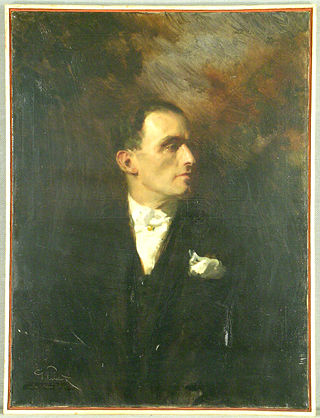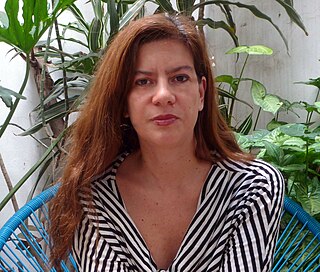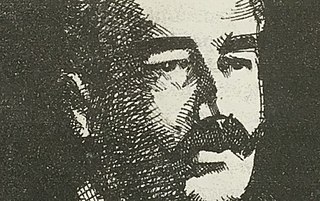
The Latin American Art Museum of Buenos Aires is an art museum located on Figueroa Alcorta Avenue, in the Palermo section of Buenos Aires.

Carlos Thays was a French-Argentine landscape architect, and a student of French landscape architect Édouard André.

Eduardo Fernando Catalano was an Argentine architect.
The Centro de Arte y Comunicación (CAyC) was an arts organization based in Buenos Aires, Argentina, that was instrumental in creating an international arts movement based on the ideas of systems art within conceptual art.
Virginio Colombo (1884–1927) was a prolific Italian architect later active in Buenos Aires, Argentina.

Mario Palanti was an Italian architect who designed important buildings in the capital cities of both Argentina and Uruguay.

Juan Antonio Buschiazzo was an Italian-born Argentine architect and engineer who contributed to the modernisation of Buenos Aires, Argentina in the 1880s and to the construction of the city of La Plata, the new capital of the Buenos Aires Province.
Jorge Glusberg was an Argentine author, publisher, curator, professor, and conceptual artist.

Adolfo Moran is a Spanish architect, city planner, and theoretical physicist, who co-founded of World Physics Society.

Alberto Prebisch was a distinguished Argentine architect whose numerous works included private houses, apartment and office blocks, cinemas, shops and banks. Prebisch was born in Tucumán, Argentina, to German settlers his brother Raúl Prebisch was a well-known economist.
Sergio Roberto Santos Rodrigues was a Brazilian carioca architect and designer. Along with Joaquim Tenreiro and José Zanine Caldas, Rodrigues was the pioneer to transform the Brazilian design in industrial design and make it known worldwide. He began his work in the field of architecture in the project of the civic center along with the also architects David Azambuja, Flávio Régis do Nascimento e Olavo redig de Campos.

The National Endowment for the Arts is a cultural public organization created in Buenos Aires, Argentina, in 1958. Its purpose is to promote cultural, educational and literary activities in Argentina.

Juan Kurchan was an Argentine architect, designer, and mentor of the Modern Movement in Argentina. He designed a portable seat known as the BKF Chair or butterfly chair. He was part of a group working with Le Corbusier on a plan for redevelopment of the city of Buenos Aires, and later entered the city administration and designed many new buildings there. He later became a director of the National Endowment for the Arts.
Sara Rosina Gramática is an Argentine architect. For over 40 years, she was one of team of five architects who founded GGMPU Arquitectos, a firm based in Córdoba, Argentina. As of today she is still active with her husband and son at MGM y Asociados.
Juan Grimm Moroni is a Chilean landscape architect. He has designed and built nearly 1000 hectares of gardens, in addition to public and private parks in Chile, Argentina, Peru and Uruguay. His name has become synonymous with exuberant and generous parks and gardens. His designs are known for the respect they show for the natural environment and for how they integrate naturally with the surrounding landscapes.

Flores & Prats is an architectural practice based in Barcelona, Spain, founded by Eva Prats and Ricardo Flores in 1998.

Inés Moisset is an Argentine architect, known for her research into the theory and history of the discipline.

Fabiana Barreda is an Argentine photographer, performer, installationist and multimedia artist. Her work specializes in the body, desire and politics of gender. She has participated in national and international exhibitions, being the most important ones in places such as Museum of Modern Art, New York University (USA), International Architecture Biennale Rotterdam (Netherlands), Telefonica Foundation of Madrid (Spain) and Museum of Monterrey – MACO (Mexico).

John Adams was a British architect, active in Uruguay at the end of the 19th and beginning of the 20th century.

The Faculty of Architecture, Design and Urbanism is a faculty of the University of Buenos Aires (UBA), the largest university in Argentina. Established in 1901 as the School of Architecture, it has since expanded to impart courses on graphic design and urbanism.














